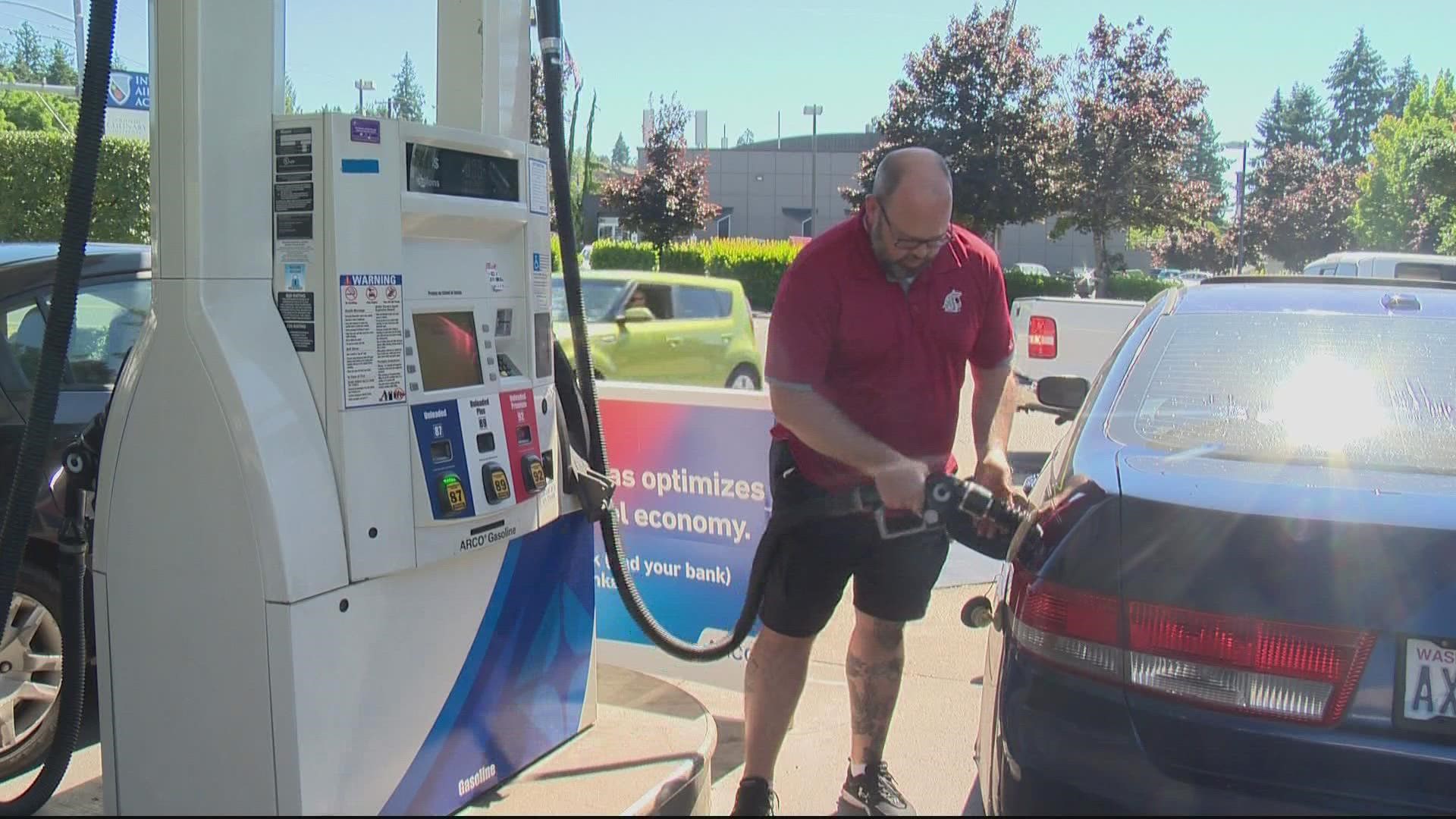PORTLAND, Ore. — The price of gas in Oregon has fallen steadily for the past three weeks, although probably not fast enough to prompt the average local driver to start celebrating.
The average cost of regular gas in the state stood at $5.392 per gallon as of Sunday, according to GasBuddy. AAA pegged the average price at a nearly-identical $5.398 per gallon as of Monday, with the Portland area average a bit higher at $5.471 per gallon.
Oregon hit its highest-ever average price point on June 15 at $5.538 per gallon of regular gas, according to GasBuddy. The decrease since then has been relatively modest, but the trend has been consistent; average prices have decreased on all but one day since June 21.
Washington's prices have also cooled off slightly, falling from $5.547 per gallon on June 15 to $5.311 as of Sunday, according to GasBuddy.
The national trend over the past two weeks has been similar, with the nationwide average price of regular gas falling 19 cents over the past two weeks to land at $4.86 per gallon.
Supply and demand
The decreases continued despite a surge in demand as drivers hit the road for the Fourth of July weekend, according to Marie Dodds, director of government and public affairs at AAA of Oregon and Idaho.
"The biggest driver of the prices we pay at our neighborhood gas station continues to be the high price of crude oil, and we've seen crude oil prices fall," she said.
Crude oil hit a recent high of about $122 per barrel on June 8 and has fallen to about $103 per barrel as of Monday. That's still significantly higher than a year ago, she said, but it's about a 14% drop over the last month.
The higher demand from drivers over the holiday weekend put some pressure on the market and caused gasoline stocks to decrease a bit, she said, but the drop in crude oil prices was enough to counteract the impact.
Demand is likely to fall slightly after the holiday weekend but remain elevated for the rest of the summer, she said, in keeping with usual seasonal patterns that appear to have reasserted themselves after a shakeup during the pandemic.
But while demand at the pump might be getting back to normal, the price of crude oil is much harder to predict, she said, making it difficult to answer what is likely the foremost question for Oregon drivers: Is the current downward trend going to continue?
"One of the biggest driving factors behind higher crude oil prices has been the war in Ukraine, the Russian invasion of Ukraine," she said. "Russia is one of the world's major oil producers — it is the number three oil producer in the world, behind the U.S. and Saudi Arabia. Any any time you have a conflict involving a major oil producer, crude oil prices can and will be very volatile."
The 2022 Atlantic hurricane season is also underway, she said, raising the possibility of weather-related production disruptions along the Gulf Coast in the coming months, which could push prices back upward.
West Coast pricing
The national average cost of a gallon of gas is now back below $5, but Oregon still has a ways to go before it hits that mark; AAA and GasBuddy both still rank the state fourth-highest in the country in terms of average gas prices.
Other western and West Coast states round out most of the top 10, which is how things tend to shake out no matter which way gas prices are trending, Dodds said.
"We have the dubious distinction here on the West Coast of usually having some of the most expensive gas prices in the nation," she said.
That's partly due to geography; the western states are farther away from big oil production hubs on the Gulf Coast and there aren't as many pipelines in the western half of the country, she said, so gas has to travel farther — and with fewer route options — to reach West Coast pumps.
Some West Coast states also have higher environmental standards, she said, making gas production more expensive. That's part of why California has outpaced other western states to become the first and only state to exceed an average gas price of $6 per gallon, she said.

